India is set to welcome one of its most ambitious infrastructure projects — the Navi Mumbai International Airport (NMIA). Scheduled to be inaugurated by Prime Minister Narendra Modi on 8 October 2025, this airport is not just a travel hub but also an architectural marvel that blends modern engineering with India’s cultural heritage. Before its grand opening, NMIA has already received its aerodrome license from the Directorate General of Civil Aviation (DGCA), officially clearing it for operations.
Architectural Brilliance – A Floating Lotus
The standout feature of Navi Mumbai International Airport is its design, which resembles a floating lotus — India’s national flower. Conceived and developed by Zaha Hadid Architects (ZHA), the structure uses steel and glass to bring this vision to life. From above, the terminal appears like petals radiating outward from a central core, symbolizing purity, strength, and resilience.
The layered glass-and-steel petals not only give the airport its iconic identity but also ensure ample natural light, reducing the need for artificial lighting and enhancing energy efficiency. This unique lotus-inspired form is expected to make NMIA one of the most photographed and globally recognized airports.
Interior Design and Cultural Inspiration
The interiors of NMIA are as striking as its exterior. At the heart of the terminal stand twelve sculptural columns, shaped like open lotus petals. These columns are hollow, ingeniously designed to allow daylight to filter into the terminal, creating a serene, temple-like atmosphere for travelers.
The design draws inspiration from India’s ancient architectural traditions, particularly the mandap halls of temples and the rock-cut structures of Ajanta and Ellora caves in Maharashtra. This cultural integration ensures that the airport not only represents modern India but also reflects its deep-rooted heritage.
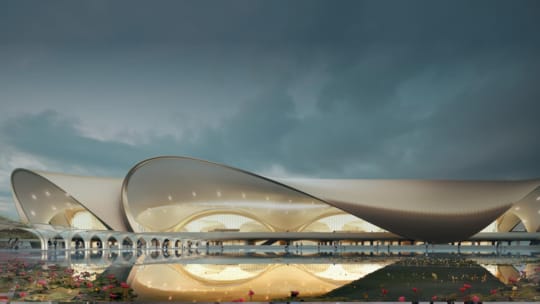
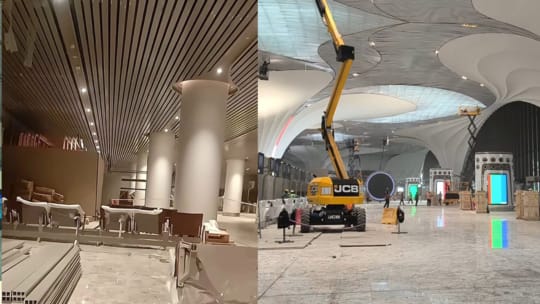
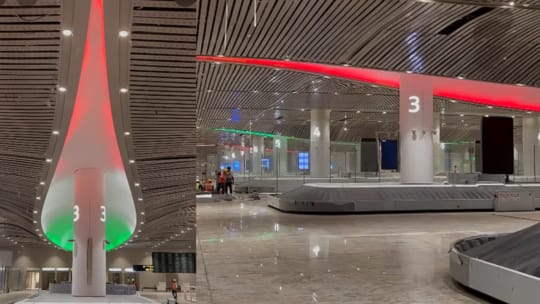
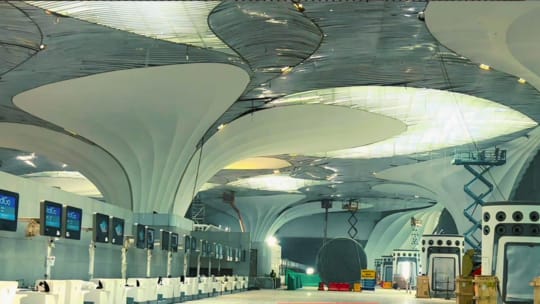
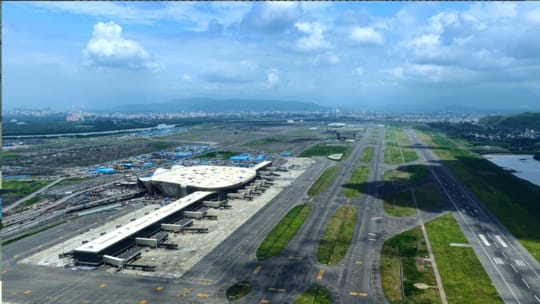
Passenger and Cargo Capacity
Navi Mumbai International Airport is designed to transform the aviation capacity of the Mumbai Metropolitan Region. Once fully operational, it will be capable of handling 90 million passengers annually and 3.2 million metric tonnes of cargo.
In its initial phase, the airport will operate with two parallel runways, easing congestion at Chhatrapati Shivaji Maharaj International Airport in Mumbai, which has been nearing saturation for years. The expansion plans are phased, ensuring that the airport grows in tandem with the region’s needs.
Sustainability and Strength
The floating lotus design is not just about beauty — it’s engineered for strength and sustainability. The structure is resilient enough to withstand seismic shocks, strong coastal winds, and heavy loads, ensuring long-term safety and stability.
Natural lighting, solar energy, and eco-friendly construction materials have been integrated into the airport’s design, making it a benchmark in green aviation infrastructure. With these features, NMIA aligns with India’s commitment to sustainable development.
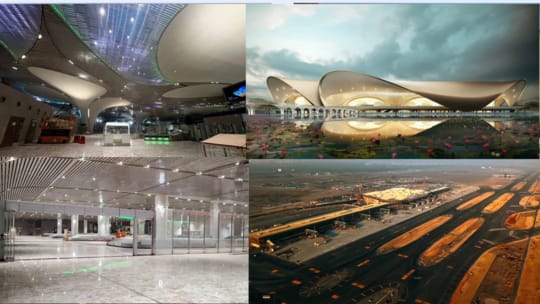
Why NMIA is a Game Changer
Navi Mumbai International Airport is more than just a second airport for Mumbai — it is a gateway to India’s future in global aviation. By reducing pressure on Mumbai’s existing airport, it promises a seamless travel experience for millions of domestic and international passengers.
Its design ensures that it becomes an architectural landmark, putting Navi Mumbai on the world map. The integration of cultural elements with futuristic engineering makes it a symbol of India’s ability to merge tradition with progress.
Economically, NMIA is set to boost real estate, tourism, and trade in Navi Mumbai and beyond. The airport will play a pivotal role in connecting India more closely to international markets, supporting growth in business and cargo movement.
FAQs
When will Navi Mumbai International Airport open?
It will be inaugurated on 8 October 2025 by Prime Minister Narendra Modi.
What is the passenger capacity of NMIA?
The airport is designed to handle 90 million passengers annually once fully operational.
Who designed the Navi Mumbai Airport?
The project was designed by Zaha Hadid Architects (ZHA), a London-based global architectural firm.
Why is the design called a “floating lotus”?
The terminal resembles the form of a lotus flower, India’s national symbol, with layered glass-and-steel petals that appear to float.
How is the airport sustainable?
It uses natural light, solar energy, and eco-friendly materials while being structurally strong enough to withstand seismic shocks and coastal weather.
Conclusion
The Navi Mumbai International Airport is set to redefine air travel in India. With its floating lotus-inspired design, advanced engineering, and cultural symbolism, NMIA is more than an airport — it is an architectural milestone and a global aviation hub in the making. As the world’s attention turns to Navi Mumbai on 8 October 2025, India will proudly showcase not just a new airport, but a vision of its future.




